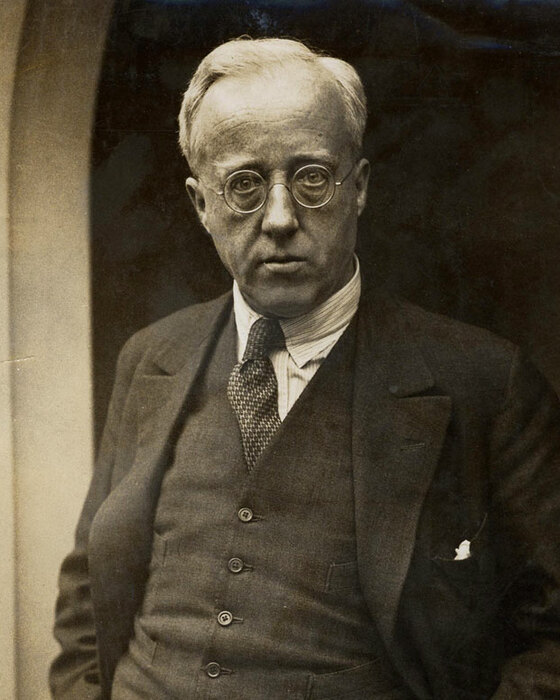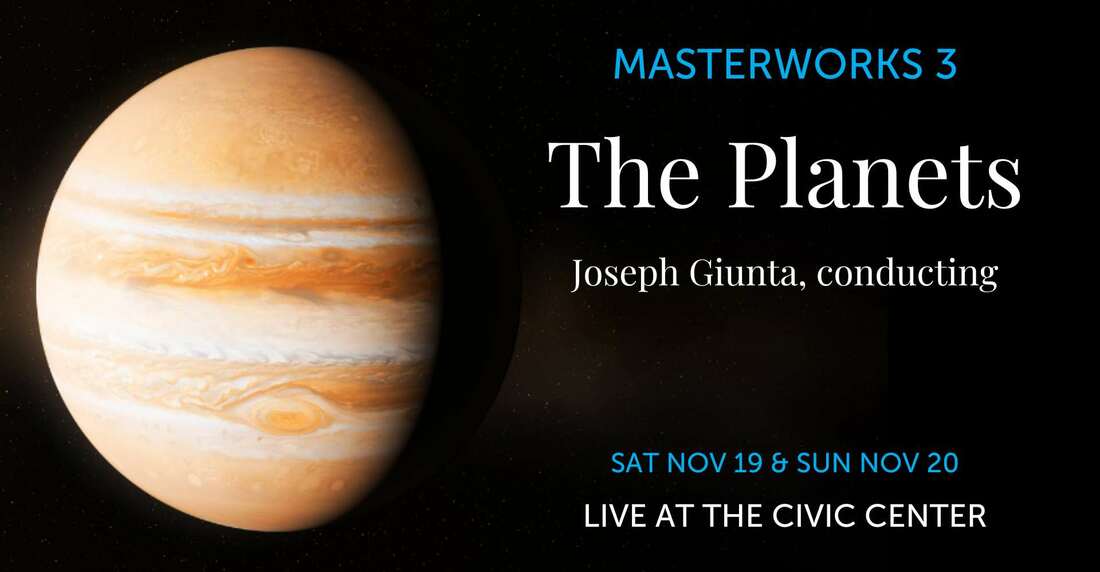Read about the music and composers featured in Masterworks 3: The Planets on November 19 & 20, 2022. Program notes by Dr. Richard E. Rodda.
Though The Planets might be thought to refer to the astronomical characters of our celestial companions, Gustav Holst said that this series of tone poems was inspired instead by the “astrological significance of the planets. There is no program music in them, neither have they any connection with the deities of classical mythology.”

GUSTAV HOLST
Born September 21, 1874 in Cheltenham;
died May 24, 1934 in London.
THE PLANETS, OP. 32
• First performed on September 29, 1918 in London, conducted by Adrian Boult.
• First performed by the Des Moines Symphony on November 22 & 23, 1980 with Yuri Krasnapolsky conducting. Four subsequent performances occurred, most recently on November 16 & 17, 2013 with Joseph Giunta conducting.
(Duration: ca. 51 minutes)
Holst’s interest in writing a piece of music on the attributes of the astrological signs was apparently spurred by his visit in the spring of 1913 with the writer and avid star-gazer Clifford Bax, who noted that Holst was himself, “a skilled reader of horoscopes.” Of the music’s inspiration, Holst noted, “As a rule I only study things that suggest music to me. That’s why one time I worried at Sanskrit. Then recently the character of each planet suggested lots to me, and I have been studying astrology fairly closely.” Despite his immediate attraction to the planets as the subject for a musical work, he took some time before beginning the composition. He once wrote to William Gillies Whittaker, “Never compose anything unless the not composing of it becomes a positive nuisance to you,” and it was not until the summer of 1914, more than a full year after he had conceived the piece, that he could no longer resist the lure of The Planets.
Holst wrote of The Planets, “These pieces were suggested by the astrological significance of the planets. There is no program music in them, neither have they any connection with the deities of classical mythology bearing the same names. If any guide to the music is required, the subtitle to each piece will be found sufficient, especially if it is used in a broad sense.” The staggering hammerblows of Mars, the Bringer of War are followed by the sweet luminosity of Venus, the Bringer of Peace. Mercury, the Winged Messenger is a nimble scherzo. Within Jupiter, the Bringer of Jollity co-exist a boisterous Bacchanalian dance and a striding hymn tune to which Elgar stood godfather. Holst declared the lugubrious Saturn, the Bringer of Old Age to be his favorite movement in the suite. Uranus, the Magician is shown as a rather portly prestidigitator. Neptune, the Mystic is a disembodied siren song for the female chorus floating away to inaudibility among the spheres.
The score calls for four flutes (third doubling first piccolo, fourth doubling second piccolo and bass flute), three oboes (third doubling bass oboe), three clarinets, bass clarinet, three bassoons, contrabassoon, six horns, four trumpets, three trombones, tenor tuba, bass tuba, six timpani (two players), bass drum, cymbals, snare drum, glockenspiel, xylophone, chimes, tambourine, triangle, tam-tam, celesta, two harps, organ and the usual strings. A hidden choir of women’s voices is used in “Neptune.”



